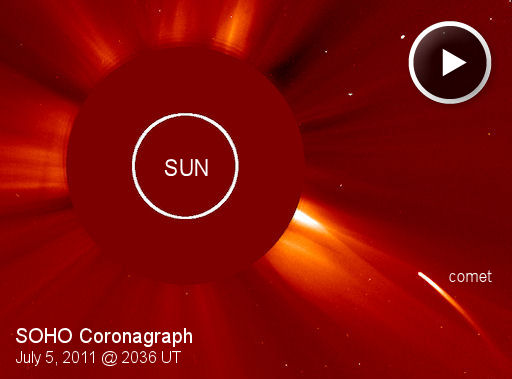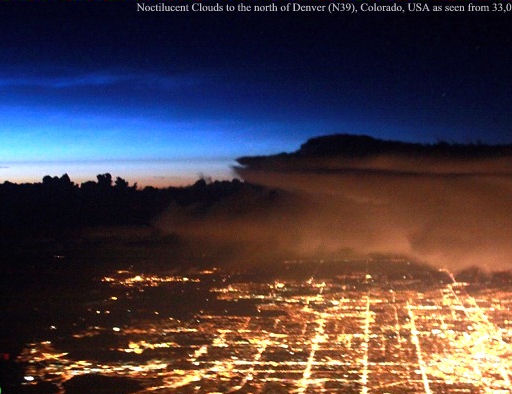Turn your cell phone into a field-tested satellite tracker. Works for Android and iPhone. | | |
MINOR STORM WATCH: NOAA forecasters estimate a 10% chance of minor geomagnetic storms on July 7th in response to an incoming CME. High-latitude sky watchers should be alert for auroras.
SUNDIVING COMET: Today, the solar system has one less comet. During the late hours of July 5th, an icy unnamed comet dove into the sun and disintegrated. The comet's last hours were recorded by coronagraphs onboard the the Solar and Heliospheric Observatory (SOHO):

The comet was probably a member of the Kreutz sungrazer family. Named after a 19th century German astronomer who studied them in detail, Kreutz sungrazers are fragments from the breakup of a giant comet at least 2000 years ago. Several of these fragments pass by the sun and disintegrate every day. Most are too small to see but occasionally a big fragment like this one attracts attention.
NASA's STEREO-A and -B spacecraft also recorded the event, and they are beaming their data back to Earth now. In a few days we'll have high-res movies of a comet's death plunge from three points of view: SOHO, STEREO-A and STEREO-B. Stay tuned.
ELECTRIC BLUE CLOUDS: When noctilucent clouds (NLCs) first appeared in the 19th century, they were a high-latitude phenomenon. You had to travel toward the poles to see their electric-blue glow. Not anymore. Just this past weekend, NLCs spilled over the Canadian border into the lower United States as far south as Denver, Colorado. Flying 33,000 feet over the Mile High City on July 2nd, Brian Whittaker snapped this picture from the window of a passenger jet:

Whittaker is a long time observer of NLCs from planes flying much further north. "I was amazed to see them at 39 degrees latitude over the USA," he says.
Another long time observer, University of Colorado atmospheric sciences professor Richard A. Keen was located just underneath the storm clouds in Whittaker's photo. "Rats!" says Keen. "I was watching for NLCs, but all I saw was rain."
During the peak of the display on July 1-2, NLCs were seen in Washington state, Oregon, Montana, North and South Dakota, Minnesota, Colorado and Kansas. Keen notes that the sightings in Colorado (lat 39.8N) and Kansas (lat 38.9N) are among the most southerly sightings ever. "The lowest-latitude sighting I know of was by Craig Coutlee in Ignacio, Colorado on June 22, 1999, the same day as my sighting near Boulder," recalls Keen. "Craig was at 37.1N latitude, just north of New Mexico."
The latest outbreak continues a trend in recent years of NLCs spreading to ever-lower latitudes. Is this a sign of climate change? Some researchers think so. Sky watchers everywhere are encouraged to be alert for electric blue just after sunset or before sunrise; observing tips may be found in the 2011 NLC gallery.
2011 Noctilucent Cloud Gallery
[previous years: 2003, 2004, 2005, 2006, 2007, 2008, 2009]
June 2011 Aurora Gallery
[Aurora alerts: text, voice] [previous Junes: 2010, 2008, 2001]
June 15th Lunar Eclipse Gallery

